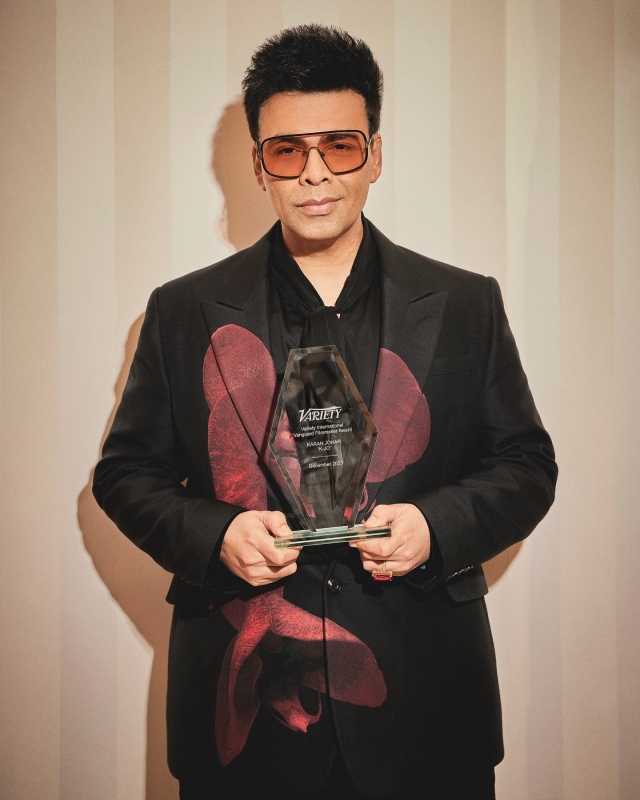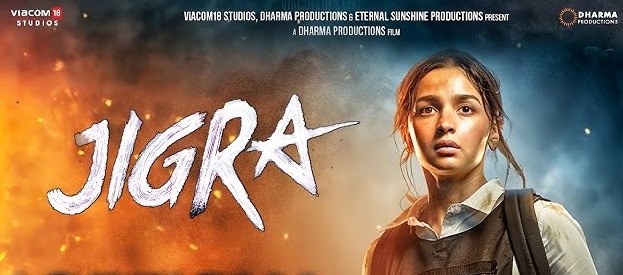Dharma’s Dharmatic Decision: Will it make a
difference?

Dharma’s Dharmatic Decision: Will it make a difference?
Film critics in Mumbai received a communication last week from Dharma Productions, which has been the talk of the community since then.
Dharma was founded in the 1970s by the late Yash Johar, and is currently owned by the Johars, Karan and his mother, Hiroo Yash Johar. On the Dharma website, we are told that: “The name Karan Johar is synonymous with prestige, elegance, versatility and success. He is amongst a prolific group of Indian film makers who have brought about a fresh and modern outlook to Indian commercial cinema and has contributed greatly to the transformation of Hindi cinema from his very first film.” There is nothing strange or hyperbolic in this introduction. Almost all companies post such introductions on their home page. If anything, it is less bombastic than the kind of introductions one reads on the websites of several other similar companies.
In November 2018, Dharma Productions launched a new subsidiary called Dharmatic Entertainment. Johar revealed the focus of the division would be on developing and producing digital content for online distribution platforms. He, and Apoorva Mehta, who also serves as the chief executive officer of Dharma Productions, would be jointly heading the unit, with Somen Mishra (head of creative development at the parent company).
On the 7th of October, 2024, four days before the release of their latest film Jigra, produced by Karan, Apoorva Mehta, Somen Mishra, Alia Bhatt and Shaheen Bhatt, Dharma sent out an official statement, signed by Karan Johar, addressed to the media, as reproduced below. Before I discuss the issues addressed in the letter, it is necessary to give a little bit of back story to the practice of showing films to critics/reviewers/the press before the release of the film. The practice is not new, and not restricted to Mumbai or India. Reviewing, as a form of journalism, is de rigueur in most parts of the free world, and is not confined to cinema. Books, drama, the arts of drawing, painting, sketching, sculpture, music, food, drinks and restaurants, computers, cars…are all reviewed in various media.

People who write these reviews are journalists who have a flair for writing, coupled with a keen interest in, and sound knowledge of, the subject of their analysis. In addition, many of them obtain certificates/diplomas/degrees in appreciating their respective areas of specialisation. The reviews used to appear only in print, when that was the only medium of mass circulation around. Then, as radio and TV appeared on the scene, reviews became a common feature on these media too. Over the last two decades, information technology has been growing by terabytes, and reviews can be read on various internet platforms. Nowadays, if you say you are a critic, the next question put to you is, “Are you on facebook/X/Instagram or YouTube?”, with print being a remote possibility.
Reviewers and critics are paid, in most cases, but some write pro bono. The subject of their review is made available to them free, either for keeps, as in a book, or to see, as in art, and to use, as in mobile phones, laptops and cars. Obviously, a journalist (most of them are poorly paid) cannot afford to spend time and money on merely getting exposure to his subject. When will the owner of the product allow the critic access to his property, tangible or intellectual, is generally the decision of the owner. In films, currently, it is usually 1-4 days before the release, giving the reviewer enough time to assess and analyse what he/she sees, and forward it to the publisher of the vehicle of his medium, for publishing at the scheduled time in the designated slot.
It is now that things take a Dharmatic turn. The above statement begins by saying that the media has firmly stood by Dharma Productions, supporting their dreams and sharing their victories. Now, if a journalist has done as above for Dharma Productions, or for any other banner for that matter, I daresay he/she is not a conscientious journalist. To a critic or reviewer, all films and all banners are equal, and it is the individual vehicle (movie) that is projected before them that they assess. They do not share any of the production house’s dreams or victories. Whether a dream (a film, in this case) is victorious (a box-office hit) should be of no concern to a reviewer. They do not stand to gain anything if the film is a hit, and do not stand to lose anything, if it is a flop. So also, they are, and ought to be, unaffected by any awards or encomiums that are bestowed on the film. If they are writing for a fee, they will be paid the same fee, whatever be the nature or outcome of a film. And if they are writing pro bono, then the question of sharing anything doesn’t arise, in the first place.
The Statement goes on to announce that the banner has “unanimously decided to forgo pre-release screenings of our upcoming films.” “Unanimously” here has to refer to the top brass at Dharma, and seems to be an odd way of announcing a decision, almost like a jury at a film festival. While they are at complete liberty to show their films in pre-release press screenings, post-release screenings or not at all, like some other banners (not every film has a press show) one wonders why did they feel the need to go to town about it. They justify their decision by saying that the media “our stories as they were meant to be experienced,” which, they clarify, means that the media will be shown Dharma films “in the first half of the release day.”
Indeed, there have been many occasions when producers/distributors have organised shows on the first half of the screening day. Some have issued tickets to media-persons to watch their films in cinema-halls, on the first day, along with the audience. The question, therefore, is, “What are the implications of such a decision for reviewers?” Before I try and answer that question, let me remind you that reviewers are, these days, not confined to 200-2,000 word appraisals on paper or on the web, but there is a new breed of ‘reviewer’, called the Influencer/YouTuber/X-critic/Instagrammer, and their reviews are often confined to a line or two. A horde of cameras and microphones greet you as you come out of a preview, and they give you your three minutes of stardom. Some are content with giving the film the number of stars they think it merits, and getting their job done. In other words, there are reviewers who will take one minute to review a film and there are critics who will take up to eleven hours. Eleven hours? Seriously?
Yes. Jigra had two shows on Friday the 11th of October at PVR-INOX Juhu, Mumbai. The first one began at 9 am and the second, which was announced as 10.15 am, began just after 10.30 am. I was not aware of the 9 am show and was sent a Google form to fill if I wanted to see the 10.15 am show, which I did. Traffic in Mumbai being what it is, I left home at 8.45 am, to make it to the theatre in time. The film got over at about 1.30 pm, and I left for home immediately afterwards. Due to the last day of the Navratri Durga Puja at S.N.D.T. University grounds at Santa Cruz, there was a massive traffic snarl, and it took me a whole hour to cross Santa Cruz, en route to Bandra, where I live.
I finally reached Bandra at 3.30 pm. At film previews, attendees are served a cola, a pack of popcorn and samosa(s), depending on the whims and budgets of the organising team. Unable to survive on two medium-sized samosas and popcorn, I decided to have lunch, after a shower. Temperatures and humidity in Mumbai are at their unbearable worst these days. So, it was 4.15 pm by the time I could switch on my computer. Since I belong to the tribe of critics who go to a film show with a blank mind and a clean slate, without Googling the film, and write long reviews, include background information, do some research, add a link to the trailer and place a still from the film, it takes me a few hours, not a few minutes, to have it posted. You could argue that I could quicken the process and write shorter reviews, but to each his own. My review, just under 2,000 words, was ready at 7.45 pm. Didn’t I say eleven hours?
By this time, around 500 ‘reviews’ of various shapes and sizes would have hit media-land. Oh yes! I can do two-minute reviews too. It’s just that I write for an international portal where my readers expect me to do a detailed analysis. And why should I not fall back upon my career as an actor, my Advanced Certificate in Film Appreciation and Diploma in Cinema, to give insights that the tiny reviews do not? Why should qualification, expertise and experience be wasted?
It is also possible that the Gen Z reviewers, Influencers and the rest, are shown the film before it is shown to the wider media. That would amount to giving them an unfair advantage. But even if that is not the case, and they saw the film with me, their reviews would have been posted by 1.30 pm, latest. Mine would come 6 hours later. And what if they were invited to the 9 am show? 12 noon and the review is out, a good head-start of seven hours over the serious and committed critics. Who would not like to come out with his review earlier than his colleagues’, but in the end, we are reviewing a film, not running a 100 metre Olympic Race. However, there is no denying that the delaying of a screening has obvious repercussions for the timeliness of a print review. And that, precisely, seems to be the only goal of this move. Let the first day’s box-office run its natural course, without the influence, if any, of a print review. Some old guard still believe in the sanctity of the word in black and white, and consider the instant reviews as flippant, off-the-cuff and non-serious.
Lastly, it has been my experience that whenever the films are shown on the day of release, or if there is an embargo on publishing before 10 am on the day of release, it has been a film of poor merit. As far as the contents of my reviews is concerned, they would be the same, irrespective of when and where I saw them. Once you don the hat of a critic, you have to bid good-bye to your ‘influencers’: personal favourites, audience applause, cat-calls, whistles, booing, walk-outs, standing ovation, pin-drop silence, and the rest. To a true and conscientious critic, the Official Statement of Dharma Productions should make no difference at all. But then, we believe in freedom of speech and right to an opinion. There will be always be some who will express a contrarian view. Power to both.
-------------------------------------------------------------------------------------------
This piece has been written pro bono, free, in layman’s terms. There is no fee for accessing or reading it. No monetary or any other form of gain is involved. The picture of Karan Johar is taken from his social media page, on facebook, titled ‘Public Photos’, purely for illustrative purposes. It does not mean or cause any infringement of the right of a copyright-holder, if there be any, in any way whatsoever.
100